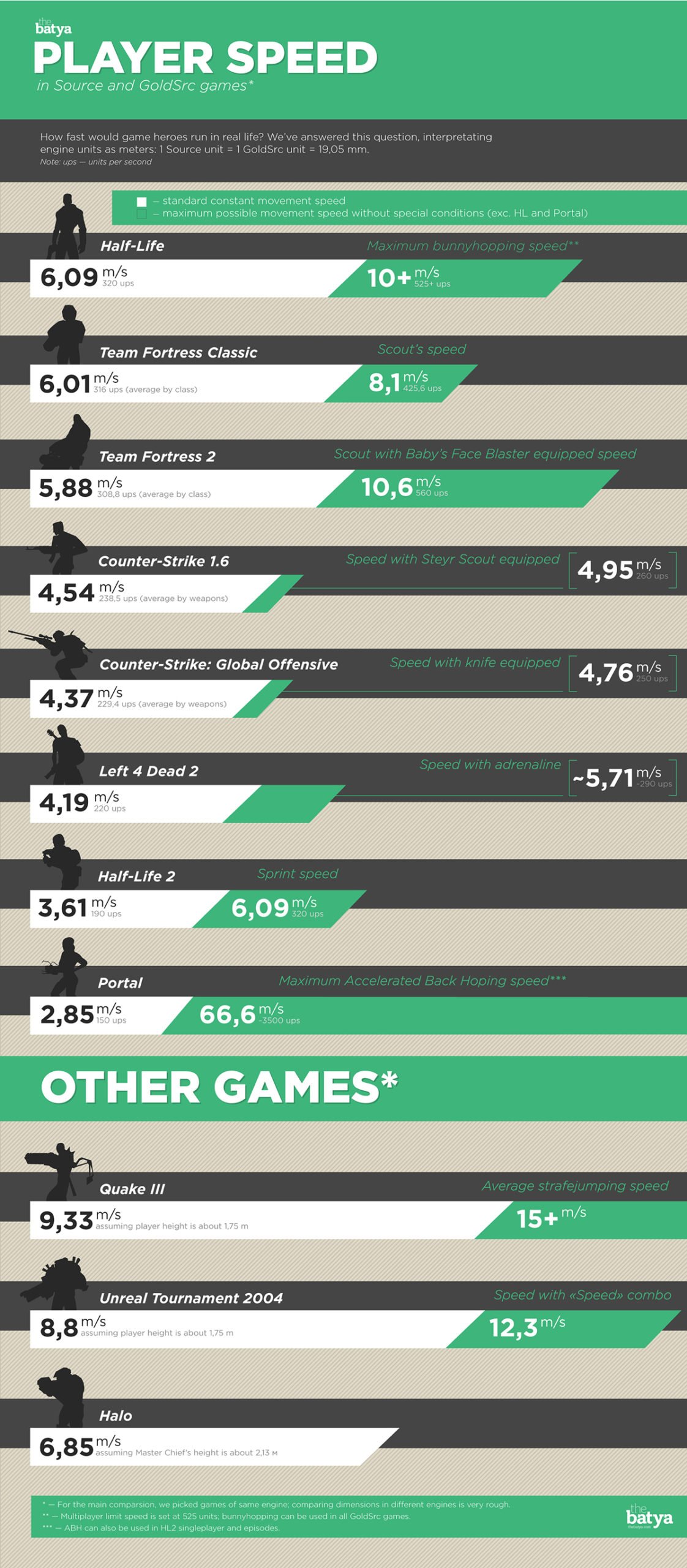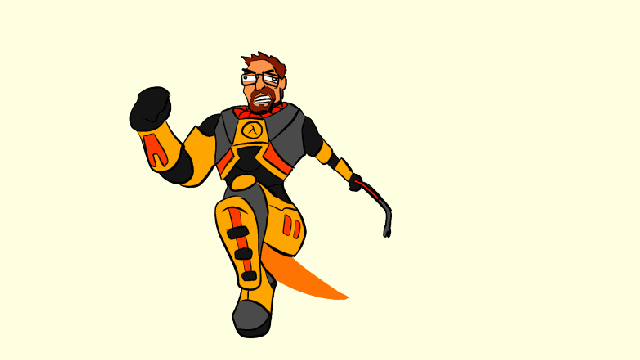Let’s find out, courtesy of some clever sums by Vlad Tretiak.
(top image by Segaman)
Picking apart Valve’s Source engine, and translating distance in the engine into actual real-world units of measurement, he’s been able to determine both the “standard constant movement speed” and “maximum possible movement speed” (ie, using items or bonuses) of some of the most popular first-person shooter games on the planet.
The results are below. Before you ask “why isn’t [other game] on the list?”, remember, the project only used Source Engine games so that it could fairly compare the speeds; as Tretiak says in the footnotes to his results, “comparing dimensions in different engines is rough”.
Nevertheless, he does squeeze a few other comparisons in, from UT2004, Quake III and Halo. No surprise, then, that Quake III comes away as the clear winner in constant speed, at least among those included.
If you’re after the most obvious omission in a discussion about FPS speed — Doom Guy — PinkLionThing has done some isolated calculations and found that, if he’d been included on the list, he would have whooped even Quake II’s arse, as he could travel 22 m/s, more than double the speed of his nearest competitor.


Comments
7 responses to “How Fast Can Valve’s FPS Characters Actually Run?”
Thats some sloppy infographing not to include doom guy for reference
Just an FYI, the fastest speed recorded for a human is 12.4m/s or (45.7km/h) for Usain Bolt at his PEAK speed… So holy shit that’s some augmented bodies for the Quake III guys 😛
What’s this “Back Hoping” thing on Portal? Is it when you wished you put the portal somewhere else?
you can jump backwards faster than you can walk forwards. They do it a lot in speed runs
Thanks. So what’s the reason for calling it “Hoping” then? Is it meant to be “Hopping” (with 2 p’s) ?
Yep, it’s meant to be two P’s, like a bunny hop, which the move imitates (and which is what the first variation was called, back during it’s discovery in Half Life 1, if my gaming history knowledge is correct, which it probably isn’t)
If you were to factor in backwards bunny hopping, like they do in HL2DQ (https://youtu.be/B83zyts5q88?t=2809) you’d probably find that Doom guy / Quake III guy have nothing on Gordon Freeman, and almost nothing on Mario in Mario 64 (https://youtu.be/jFlH90SrOKM?t=69)
The original Quake predated Half Life with bunny hopping aka strafe jumping. Then again not surprised Half life one had it since GoldSource was derived from the quake 1 engine.
Still Quake 1 could of been where it became popular and was officially named, not its first instance.
The thought of someone Bhopping in real life really amuses me. It’d look so god damn funny